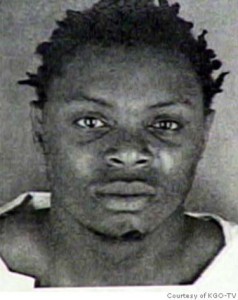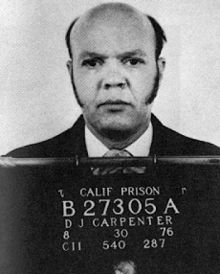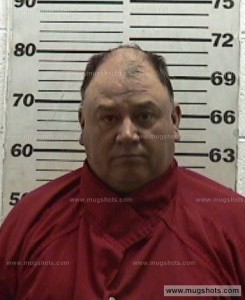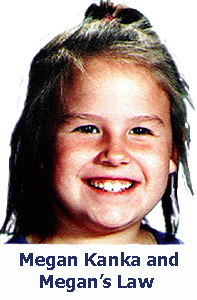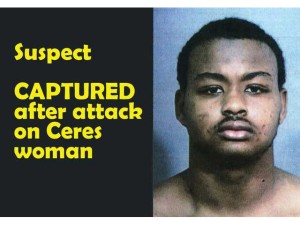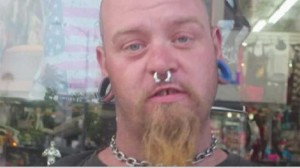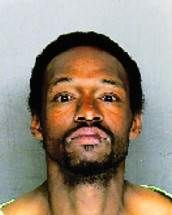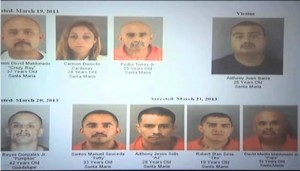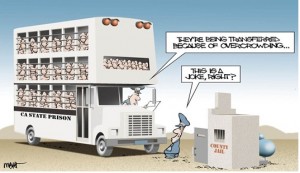In 1993, my 12-year-old daughter Polly was kidnapped, raped and murdered by a recidivist violent offender. Over the course of three decades her killer, like many other repeat offenders, had been regurgitated through California’s criminal justice turnstile numerous times for a variety of non-serious, serious, and violent crimes. He had been on the streets for less than six months when he killed Polly.

The crime against Polly prompted more than 800,000 Californian’s to sign the then fledgling 3-strikes-and-you’re-out ballot petition that would enhance prison sentences for repeat offenders, but it was not the crime that inspired 3-strikes. A year earlier 18-year old Kimber Reynolds was shot in the face and murdered by a 357-magnum handgun when she refused to give her purse to a thief: in other words, a petty crime turned violent with the squeeze of a trigger.
By the time the 1994 election occurred and 3-strikes passed by more than 70% of the popular vote, Governor Wilson had already signed the bill into law with the overwhelming support of the California legislature.
The Three Strikes law clearly established a sentencing structure for career criminals based upon their criminal history, not the last crime for which they were convicted. The law was clear and unambiguous: “With respect to a defendant convicted of any new felony who has two or more serious or violent prior felonies, the law mandates an indeterminate life sentence of no less than 25 years to life.” Its stated intent was “to ensure longer prison sentences and greater punishment for those who commit a felony and have been previously convicted of serious and/or violent felony offenses.”
In 1993, California was experiencing the most robust crime spurt in its history with 336,381 violent crimes, including 4,096 murders and 11,766 rapes, having been reported to law enforcement agencies. By 2011, the violent crime rate in California had dropped to 154,944 reported incidents. That included 1,792 murders and 7,663 rapes. In other words, you were half as likely to be the victim of a violent crime in in 2011 as in 1993. I would never attribute the entire decline in California’s crime rates since 1993 to the influence of the 3-Strikes law. But it would be equally misguided to maintain that the law has made no contribution.
As of Sept. 2012, the total prison population in California was 134,868. The 3rd-striker population was 8,873; or 6.6 percent of total. Each of those individuals had at least 2 serious or violent offenses on their record and many had multiple felony convictions. In fact, the average 3rd striker has between 3.5-5 felony convictions.
Each 3-strike inmate has had the benefit of prosecutorial discretion (in the furtherance of justice, or if there is insufficient evidence to prove the prior strike conviction), judicial discretion (trial courts in California also have discretion in their sentencing choices that permit them to fashion appropriate outcomes on behalf of a particular third-strike defendant), and the appeals process. Those who qualified had the benefit of the previous Prop 36 (2000) drug treatment diversion program. If they were unable to surmount any of those barriers, I agree with the court that they belong in prison.
Prop 36 proponents also said that California would no longer pay for housing or long-term health care for elderly, low-risk, non-violent inmates serving life sentences for petty crimes. According to the Public Policy Institute of California men between 18-40-years old are the age group most likely to commit crime. If that statistic is consistent with the 3-strike population, then most 3rd strikers will be eligible for parole before they reach their 65th birthday. In fact, according to data on third-strikers categorized by age, we see that less than 10.2 percent of the entire third-striker population is over the age of 60. Similarly, less than 3.6 percent are over the age of 65.
In the 5-years prior to 3-strikes California taxpayers funded and built 19 new prisons. During the 18 years that 3-strikes was in effect California taxpayers have only funded and built 1 new prison. And that happened while the state population grew from 33 million to 38 million.
Personally, I believe that this clearly demonstrates that 3-strikes was working as intended and has prevented millions of victimizations by keeping career criminals behind bars. Therefore, there was no reason to tweak the law. However, Proposition 36 proponents suggested that too many criminals are serving life sentences for petty crimes, leading to unacceptable costs to the taxpayer and dangerous prison overcrowding, and that nobody who poses a risk to public safety will be released from prison as a result of its passage. As a result, approximately 3,000 3rd strikers now qualify for resentencing and release back into society.
This is the same bill of goods that Governor Brown pitched when he sold the legislature on AB-109, the Public Safety Realignment Program, which became law on October 1, 2011. Under AB 109, responsibility for who houses, supervises, and rehabilitates non-violent, non-serious, and non-sexual criminals shifted away from the State of California to the Counties. That means that tens of thousands of prison inmates were transferred from state prisons to county jails. Because many Counties were already beyond capacity the result has been a wholesale felon dump onto the streets of California.
The results are alarming. According to FBI statistics documenting national and state crimes over the first six months of 2012, after nearly 20-years of declining crime rates, crime is on the rise. However, violent crime in California increased at more than twice the national rate, rising 4% while the rise in property crime was six times higher at 9%. Furthermore California experienced a 7.6% increase in homicide and double-digit increases in burglary and auto theft. The unintended consequences of AB 109 have resulted in so called non-serious, non-violent, and non-sexual offenders wreaking havoc on the streets of California, murdering, raping and maiming innocent citizens.
Are there really thousands of 3rd strikers serving life sentences for petty crime? Remember, the 3-strikes law clearly stated that, “With respect to a defendant convicted of any new felony who has two or more serious or violent prior felonies, the law mandates an indeterminate life sentence of no less than 25 years to life.” The goal was to rid society of career criminals, that small percentage of individuals responsible for a large percentage of serious and violent crime.
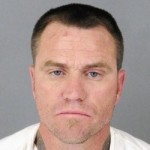
Scott Hove
Yes, there are individuals in the 3rd-strike population whose final conviction was for trivial crime, but that is but the tip of the iceberg. Let’s look at Scott Andrew Hove who was sentenced to 29-years to life for pilfering $20 worth of wire from a Home Depot. However, Hove is also an “incurable recidivist,” with a lengthy rap sheet dating from 1984 with convictions including theft, burglary, drug possession and DUI causing death. Hove is not an anomaly. I would challenge Proposition 36 proponents to cite one case of an inmate serving a life sentence for a history of petty crime.
That brings us to what I consider one of the biggest loopholes that Prop 36 is responsible for. The current iteration of 3-strikes removes prosecutorial discretion as it applies to so-called wobblers and non-serious/violent crimes. Requiring the third strike to be serious or violent to trigger a 25-life sentence shifts the emphasis of the law from an offender’s criminal history to the last crime for which he was caught.

John Ewell
And finally, that brings us to the sad and pitiful case of John Wesley Ewell. For those that don’t know, Ewell was a 2-striker with a criminal record spanning more than 2 decades. He was well known in his community as a vocal opponent of 3-strikes who said that the policy made him a prisoner in his own home. The LA District Attorney opted not to charge Ewell with a third strike for minor crimes on four separate occasions because he believed that the third strike must be a serious/violent felony. John Wesley Ewell is now sitting in the LA County jail charged with four counts of murder with special circumstances, robbery and receiving stolen property. Under the old three strikes law these crimes were totally preventable. Under the current three strikes, they were inevitable.
Proponents say that Proposition 36 is more effective that the law it has replaced because its policies have been in place in LA County for more than a decade so they are tried and true. I say that John Wesley Ewell proves that Prop 36 policy is flawed and will endanger the lives of innocent citizens.
Does anybody really expect thousands of third strikers released into the community to obey the law? Remember, each one of these characters has at least two serious or violent convictions. In each case the prosecutor, judge, and the court of appeals felt that society was well served by keeping them behind bars and I couldn’t agree more.







